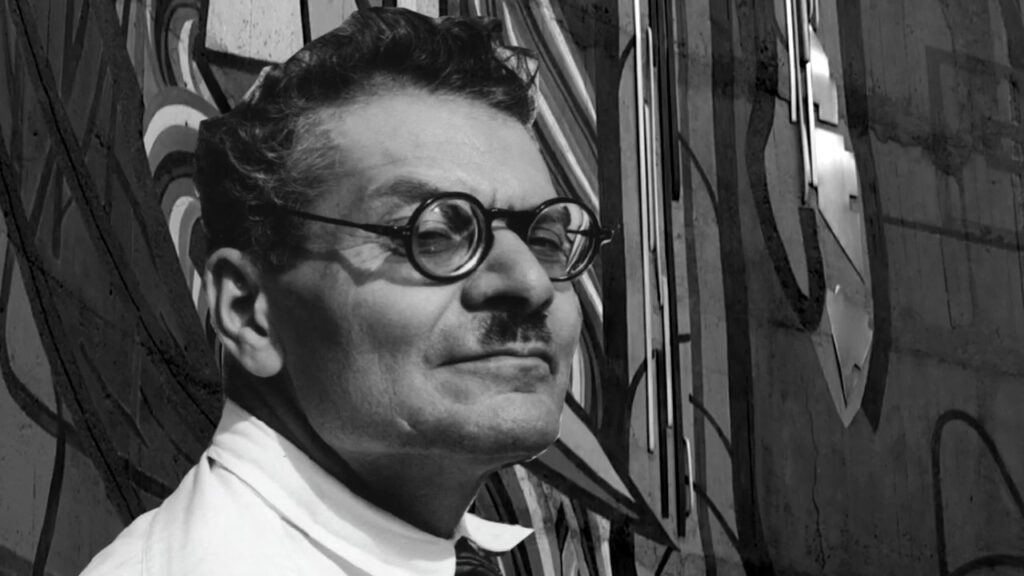Exploring the Legacy of La Escuela Normal de Maestros: A Mario Pani Masterpiece
La Escuela Normal de Maestros in Mexico is not only an important educational institution but also a significant architectural landmark designed by the illustrious Mexican architect Mario Pani. Tracing back to the mid-20th century, this structure stands as a testament to the modernist movement that swept through the country, influencing the aesthetic and functional aspects of building design. Pani, renowned for his vision in urban planning and innovative architectural solutions, crafted a space that was intended to foster education and growth, aligning perfectly with the academic mission of the establishment.
The layout of the Escuela Normal de Maestros reflects Pani’s commitment to creating interactive and communal learning environments. Each element within the premises, from the arrangement of classrooms and administrative offices to the integration of open spaces and communal areas, was meticulously designed to promote collaboration and intellectual exchange. The facility modulates light and space, embodying the principles of harmony and balance, characteristics that are hallmarks of Pani’s architectural philosophy. Even today, educators and students alike benefit from the utility and inspiration drawn from these surroundings.
Visitors to La Escuela Normal de Maestros are often captivated by the historical significance and enduring influence of this educational powerhouse. It is more than a mere building; it is a cultural icon that represents a pivotal era in Mexican history when education reforms and architectural innovation intersected. The institute’s legacy, continually perpetuated by the ongoing academic activities within its walls, is an enduring reminder of Mario Pani’s architectural mastery and his contribution to Mexico’s modern landscape. Exploring this site offers a unique glimpse into a chapter of Mexico’s architectural and educational chronicle that continues to resonate with contemporary society.
The Artistic Brilliance of José Clemente Orozco at La Escuela Normal de Maestros
Mexico’s vibrant art scene has been deeply influenced by the works of José Clemente Orozco, a profound painter and muralist. One of his most significant contributions is the series of murals at La Escuela Normal de Maestros (Teachers’ College) in Mexico City. These masterpieces are not just decoration; they tell powerful stories of social and political life in Mexico and carry a deep philosophical meaning that continues to inspire new generations.
Created between 1923 and 1926, Orozco’s murals at La Escuela Normal de Maestros showcase his unique style that combines realism with a touch of the fantastical. The four murals titled “The Trench,” “The Destruction,” “The Warriors,” and “Omniscience” are true to Orozco’s often critical view of social issues. His bold use of color and dramatic contrasts captures the essence of struggle and human emotion, making these murals a riveting historical narrative.
Orozco’s dedication to depicting the realities of Mexican society was unwavering, and his work at La Escuela Normal de Maestros is considered to be among his first great mural projects. Visitors to this educational institution are immediately drawn to the dynamic and expressive figures that seem to leap off the walls. With each mural, Orozco delved into themes of the Mexican Revolution and human existence, leaving viewers with a sense of the somber truths of life’s perpetual conflict and triumph.
His influence remains strong within the walls of La Escuela Normal de Maestros as educators and students pass the murals daily, reminded of the cultural and historical importance of his work. Orozco did not only aim to decorate a space; he sought to provoke thought and encourage the viewer to question and reflect on the socio-political landscape. The artistic brilliance of José Clemente Orozco at La Escuela Normal de Maestros is an enduring testament to the power of art as a mirror to society.
Discovering Mexico’s Educational Heritage: La Escuela Normal de Maestros
When diving into the rich tapestry of Mexico’s history, the essence of education stands out as a testament to the country’s commitment to academic progress. Among the venerated institutions, La Escuela Normal de Maestros is a gem that has played a pivotal role in shaping the educators of Mexico. Established during the post-revolutionary period, this establishment has been instrumental in revolutionizing teaching methodologies and education standards across the nation.
The Escuela Normal de Maestros is more than just an educational institution; it’s an embodiment of Mexico’s dedication to intellectual empowerment and cultural identity. The school has been a beacon of teacher training, where generations of teachers have been equipped with the pedagogical skills necessary to inspire and shape young minds. The curriculum not only focuses on academic excellence but also celebrates the rich cultural diversity of Mexico, thus nurturing educators who are well-versed in both global pedagogies and local traditions.
As visitors explore the corridors and classrooms of La Escuela Normal de Maestros, they are taken on a journey through history. Walls adorned with murals tell stories of educational triumphs and challenges, underscoring the role of educators as the catalysts for change. The legacy of this institution is seen in the numerous alumni who have gone on to become influential figures in education reform, policy-making, and teaching innovation across Mexico and beyond.
La Escuela Normal de Maestros: A Monument of Mexican Architectural History
The Escuela Normal de Maestros, located in Mexico’s bustling capital, is a profound testament to the country’s rich educational and architectural heritage. Originally established with the purpose of training teachers, the institution dates back to the early 20th century. Its significance, however, transcends its foundational goal, encompassing a time capsule of design and urban developmental history. Over the years, the building has become a symbol of the transformative power of education in Mexico.
Architecturally, the Escuela Normal de Maestros is an embodiment of post-revolutionary Mexican identity. The structure’s facade carries elements of neoclassical influence, a popular style that sought to convey the ideals of order, discipline, and knowledge. Yet, it is the infusion of indigenous motifs and local materials that give it a unique distinction, reflecting a period when national identity was being fervently renegotiated and reaffirmed.
The building’s layout is as much a part of its historical narrative as its aesthetic qualities. Visitors are greeted by a grand entrance leading to a series of open courtyards, a hallmark of traditional Mexican architecture. These open spaces not only provided ventilation and natural light in the time before modern climate control but also served as communal areas that fostered a sense of unity among the students and educators—a design philosophy that emphasized the social aspect of education.
In delving into the institutional history of the Escuela Normal de Maestros, one uncovers a lineage of notable academics and pedagogues who have passed through its halls. Many of them have contributed significantly to educational reforms and have been at the forefront of pedagogical thought in Mexico. The school has been a breeding ground for educational innovation, positively impacting numerous generations.
Today, the Escuela Normal de Maestros stands not only as an academic institution but also as a cultural heritage site. It provides insight into the evolution of educational architecture in Mexico and continues to serve as an inspiration for contemporary architectural designs. It holds a mirror to the societal changes and the educational advancements that have shaped modern Mexico, making it a must-visit spot for travelers with an inclination towards historical and architectural exploration.



